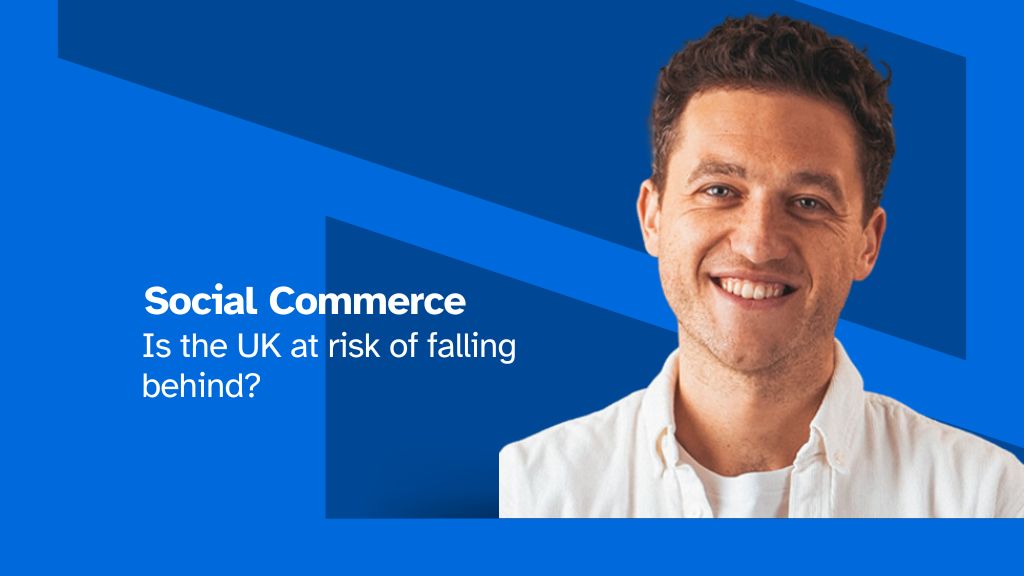By Mark Bellamy, Strategy Director at NewGen
Firstly, it’s important to clarify what we mean by Social Commerce. For the purists, Social Commerce is a fully in-app purchase, no Shopify checkouts, no links to buy elsewhere, these journeys fall into a grey area better labeled as social shopping. The key difference in social shopping is that the social platform doesn’t have all the data, it doesn’t know whether you’ve checked out, just what content you’ve been clicking on. And that end to end data makes a big difference to getting you to buy more.
But let’s go back to 2022. TikTok Shop, Live Streaming and Prime were getting every brand manager excited about the potential of social platforms in driving bottom line sales. But fast forward to 2024 and the growth of UK Social Commerce sales haven’t had the hockey stick spike the US and China have enjoyed.
We have equivalent Ecommerce penetration to both markets, TikTok even decided to use the UK as the pilot market outside of APAC to launch shops in 2021… so what’s the hold up?
There are a few cultural and economic tailwinds we could dwell on, but I believe it all comes down to trust (or lack of it). The UK has the lowest trust in media out of the major Ecommerce markets. We brits love a TikTok or Insta doom scroll as much as anyone else, but would you trust them with your bank details?
For us these platforms are still entertainment sources, not one-stop shops to run our lives from. When it comes to our money, we’re skeptical of change, so the UK has lagged behind our more open minded peers to the East and West.
However, there is cause for hope that social commerce is about to take off on our shores.
TikTok is on the charm offensive with brands to come to the platform and sell their products. Whether by offering discounted warehousing services to smaller brands or giving access to an army of affiliate sellers, TikTok is going after brands to get them comfortable with selling in-app.
But this in itself isn’t enough, the swell of young ‘hustlers’ taking to TikTok to make a quick bit of cash by flogging cheap boxes of Coca-Cola and Fairy Liquid is great for driving excitement amongst young consumers, but it’s also giving those sellers a platform to build their own brand and following.
If we look at the success of social commerce in China, it was primarily personality driven, not by brands. Yes, discounts are important, but real trust in the quality of the product is instilled by the person selling it. So cultivating these social sales people into full blown content creators, with their own set of loyal followers, is where things start to get really interesting for brands. Suddenly you have both marketing and conversion power within one influencer partnership. Because who do Gen Z trust when making a purchase? You guessed it.
So rather than looking to big name influencers you already work with to start selling your products, my advice is to look for creators already well versed in how to close a sale through social and nurture them into a marketing vehicle for your brand. The find and nurture model has been a pillar of influencer marketing for years, particularly in the gaming space, but brands have yet to apply this approach to social sellers.
If brands can start to bring their marketing budgets to building these sellers up, then the whole business model for social commerce starts to work. Some tactical paid media to stimulate the hype, the trust and skills of a well known, well liked seller to keep their attention and convert. Then the ability to retarget in app with ease.
This is when social starts to pay for itself, but we need the creators to make consumers trust the platforms for us, because when it comes to money, it takes a while for us Brits to let our guard down.









